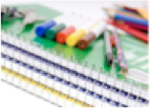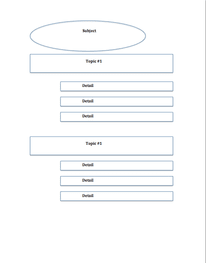|
When a struggling reader has been referred for a Special Education Evaluation in her school, she may receive a school psychological evaluation, special education testing, a speech-language evaluation, and hopefully other relevant assessments such as from an occupational therapist.
If the IEP Team – of which you (as a parent or teacher) are a key member – has determined that your child is eligible for Special Education services, the Team will identify your child with one of several possible labels: -Communication Impairment -Developmental Delay (especially if your child is 2nd grade or below) -Specific Learning Disability (SLD) The most important result of this IEP (Individualized Education Plan) is the instruction and support that your child will receive. Each child – who is identified with a ‘disability’ at an IEP Meeting – has a unique profile of strengths and weaknesses, and teaching approaches need to be tailored to address your child’s needs. If your younger child (or student) really struggles to sound out words, remember sight words, read sentences/stories, and spell, or if your older child reads very hesitantly and with great effort and/or makes a great number of errors; or if she struggles to understand text or to write, you may ask if she is Dyslexic. The IEP Team’s response is very important. You may hear a response that she is Dyslexic or has a specific reading disability. However, you may hear some responses similar to these: -We don’t label our students because that is not fair to them. -Dyslexia is a medical diagnosis, so we can’t say that. -A young child can’t be diagnosed with Dyslexia; we can test for that in a couple of years. -We will put these supports into place first before we say that. There may be many reasons that the IEP Team may give those last 4 responses, but you should be concerned that the services that the Team recommends may not fully address your child’s needs. You have some options if you are concerned. Please refer to the Parent's Guide To Special Education (which is in our Blog on 1/22/2017) for initial support. Also, a great deal of special education regulations are based on the Individuals with Disabilities Act (IDEA); you should look to learn about this federal law (http://idea.ed.gov). If you have any questions about this process, please feel free to contact Linguistic Foundations; we can help clarify some of your questions. We can also talk about testing support that Linguistic Foundations offers. Thanks very much. As a Parent or Teacher, you understand that Language plays a role in a child’s Reading, Writing, and overall Academic development and performance. In your interactions with your child or student, you naturally use language as the means to communicate and also to teach. It is the Natural way, and we often don’t even think about how we use language to help a child grow and learn!
But when a child is struggling with her language understanding or expression – or when she is not reading, writing or understanding effectively – language becomes a much more important component. This is when a Parent and Teacher need to have more specific knowledge about Language. I can think of two Questions to ask How can I improve my Communication with my Child to make learning experiences more productive? How do my Child’s Language Skills impact her development and growth of Reading, Writing, and other Academic Areas? You can find a great deal of practical and user-friendly information at www.asha.org. This website is the home of the American Speech-language and Hearing Association (ASHA), which is the national organization of speech-language pathologists. I find these links incredibly helpful! *Reading, Writing, & Language-Based Learning Disabilities (including Dyslexia) http://www.asha.org/topics/literacy/ http://www.asha.org/public/speech/disorders/LBLD/ *I think these links are particularly helpful. A child who is struggling with Literacy may well have subtle Language-related weaknesses that have not been noticed. Typical Language development http://www.asha.org/public/speech/development/ Language disabilities in the schools http://www.asha.org/public/speech/development/schoolsFAQ/ Please feel free to contact Linguistic Foundations with any questions you may have related to Language-based learning for a child, adolescent, teen, or adult. We will be happy to speak with you – it is our passion and an important key to a child’s learning! In addition, if you think your child can benefit from assessment of her Language-learning and Literacy skills, we can speak about that, as well. Thank you very much! The most recent Blogs at Linguistic Foundations have been related to developing a strong relationship between a Family and Teachers. As a parent, you know your child from a perspective that your child’s teachers don’t have. Your input paints a full picture of your child – teachers need to know this information. Teachers need to keep parents informed on the types of teaching strategies they are using and how a child is progressing. This way, parents can carry over these strategies at home. It definitely needs to be a Team Approach! Both Parents and Teachers should be communicating on a regular basis when a child is struggling. Parent-teacher meetings and a Student Support Team-child study group (mentioned in the January 8th Blog) are necessary ways to keep updated. Hopefully a struggling child has had a chance to be exposed in the classroom to differentiated teaching strategies – which are geared to her particular strengths and weaknesses. If these strategies in the classroom are not making a difference, then a Special Education referral may be an option to consider. The Special Education process is clearly set up. In Massachusetts, there are both state and national guidelines as to how it should work to help your child. The process is set up to help your child, but it can be complicated – for Parents and Teachers alike! A Parent’s Guide to Special Education can really help clarify this important process and prepare you to participate fully! The Guide was published together by the Federation for Children with Special Needs (FCSN) and the Massachusetts Department Elementary and Secondary Education (DESE). A Parent’s Guide to Special Education explains in user-friendly language how the Special Education Process works. It can help to provide Parents with the understanding of all the steps involved and can even be a reminder for Teachers. Please access this guide in the PDF file included here. I welcome your feedback to this Blog and any other entries. If you have any questions, please contact Linguistic Foundations. Additionally, we can speak directly with concerns you may have about your child’s language and literacy skills. Thank you very much!
 What is the process that can lead your child to receive the type of instruction that she needs to be successful? Be A Part of Your Child's Learning A school should have a system in place to help this to happen, but as a parent, the process can seem confusing (sometimes it is even confusing to the teachers involved). It is always crucial that you are an active part of your child’s teaching team. This is especially true if she is struggling. I have mentioned in past Blogs that you should speak with your child’s teachers – classroom teacher, paraprofessional, physical therapist, speech-language pathologist, and any other staff member who works with her. Build a relationship; learn how to carry-over what is happening in the classroom; and inform the teachers about all that you know. In this way, you become an active member! Differentiated Instruction Ideally, you hope that your child’s teachers recognize that she is struggling and has set up some form of Differentiated Instruction as an intervention to help. That is a great first step. Differentiated Instruction is teaching geared to your child’s strengths and weaknesses. An expert teacher will have a deep understanding of different teaching strategies that can help many types of learners and will be able to put the best strategies in place for your child. An expert teacher will also get the help of others if s/he is not sure how best to help. As an example, a kindergarten child may have difficulty hearing sounds in words; a teacher can use blocks that slide into boxes to represent sounds (see the Blog from October 29, 2016). Her teacher may be able to pull her aside for some extra practice for 5 or 10 minutes each day to build this skill. In another example, an older student may need specific step-by-step instructions to help her understand and use a particular kind of graphic organizer, and her teacher will find time to give her that opportunity to learn and practice (see below). Many school districts have a student support team or a child study team in place. Your child’s teacher can meet with this team of specialist teachers to build a teaching plan to address her needs. The team will meet with your teacher; offer differentiated teaching strategies; and then meet again after perhaps a 6-week period. If the teaching plan is effective, it can continue, or it can be modified. You should be a part of these meetings. Politely invite yourself to be an active and productive member of a student support team, so that you can help your child with the skills she needs. I think these are important first steps that you, as a parent, and your child’s teachers can take when you first notice that your child may be struggling. Finally You may find that one intervention is all your child needs, or you may find that further discussion may be necessary. Be sure to monitor how your child is progressing and be ready to continue this discussion with your child’s teachers. Remember that a Wait-And-See Approach is probably not the best way-Be Proactive! If you have any questions, please contact us at Linguistic Foundations. And if you think you may want to have your child evaluated through us, we can speak with you, as well. Thank you! You are an Expert
As a parent, you have the deepest and most important understanding of your child. If your child is struggling with her language, reading, writing, mathematics, or social-emotional development in the classroom, you probably have had experience with these kinds of difficulties since your child has been very young. You know your child’s strengths and weaknesses very well, and you have a very strong understanding of how and when she struggles or succeeds. You know your child almost instinctively! Your long-term and deep knowledge of your child is a very important piece of the overall picture of her as a learner! Build Relationships with Teachers I think that the best first step is to really know each teacher who works with your child and know the work each teacher does with her. A staff member can know your child in any capacity – maybe as a classroom teacher, a speech-language pathologist, a special education teacher, or an occupational therapist. Make sure you communicate with staff members as often as you can. Find out how your child is doing and how you can help carry over the work being done. You want to be a full and productive part of your child’s learning. Shared Values I think that making yourself a part of your child’s decision-making process can be very intimidating. But if you have gotten to know your child’s teachers, you may have developed a level of comfort and trust with one or more of them; a person who shares your values. A person you can trust – with insights into your child – is an invaluable ally to have. This may be the first person (or people) with whom you can share your insights and understandings about your child. Always Remember You need to be a full part of the teaching decisions made for your child because of your expertise as a parent and your experience with your child as a learner. This is best for your child! Please feel free to add a comment, ask a question, or offer me feedback. I welcome your input and will be pleased to respond. If you have any questions about our website, please contact me directly at Linguistic Foundations. And if you think you may want to have your child evaluated through us, I can speak with you, as well. Thank you! In my Blog today, I have included a table that I adapted from Teaching Standards for Teachers of Reading and Writing, created by the International Dyslexia Society (IDA) - www.dyslexiaida.org. This table is related to Phonological Awareness, about which I wrote in my Blogs on October 29, 2016 and November 13, 2016. I hope that these 3 Blogs will give you a good understanding of Phonological Awareness and how it is used in the classroom. I am very excited to get feedback from anyone who reads this Blog. Please feel free to add a comment, and I will definitely respond. If you have any questions about any information, please contact me at Linguistic Foundations. If you think you may want to have your child evaluated through us, I can speak with you, as well. Please open the pdf files to continue. Thank you very much!
An Addition to the Teaching Phonological Awareness in the Classroom blog from November 13th12/4/2016 Listed in the PDF file below are References for the recent Blog Teaching Phonological Awareness in the Classroom, which was dated November 13, 2016. I realize that references may be useful as resources for teachers. Also, any conversation you have – as a parent – with school personnel is strengthened when you can cite the relevant and important research that is available. I also added these references to the PDF file posted on November 13th, so that file is now complete. Thanks to DD-RI!
As a parent, you are the person who is most aware of your child’s growth and development. If you have a sense that your child is struggling to develop fundamental spoken language (listening skills, comprehension, speaking) or the abilities related to literacy – reading and writing – then trust your gut feelings and instincts. If your child is in any type of school setting – whether it is a preschool, primary, middle, or secondary – speak to a teaching staff member to learn how your child is progressing and to convey your concerns. A school-based Speech-Language Pathologist may be an important advocate for your child. Speech-Language Pathologists can have a wealth of knowledge about not only spoken language, but also literacy and the effect of language and literacy difficulties in the classroom. Please open the pdf file to continue. Thank you
In our most recent Blog, Phonological Awareness was described as one of the early and fundamental skills in the development of literacy. Phonological Awareness skill has long-term impact on reading and writing proficiency. Phonological Awareness has to be a high priority as a teacher begins to teach literacy in the early grades. In this Blog, I want to provide you with an idea of what Phonological Awareness teaching might look like in a primary classroom. The framework in the PDF-File below has a Kindergarten level classroom in mind. It may look somewhat different in an earlier Pre-K or a later Grade 1 classroom, but the same main pieces should be in place. As you know, a teacher’s schedule is always very tight, and teachers have to be creative and efficient to be able to get to all of the important areas of instruction. If you are a Teacher, plan how you might be able to put Phonological Awareness instruction into place in your classroom – you may spend some time at Circle Time, during Centers, during Choice Time, or even during Nap Time & transitions. If you are a Parent, please talk to your child’s teacher to learn how Phonological Awareness instruction is taking place in the classroom and how your child is doing. There may be experts within the school – perhaps your child’s teacher or another classroom teacher may be well-experienced. There may be other experts around the school who could be a resource, such as the Speech-Language Pathologist or a Special Education Teacher. Make sure your child doesn’t miss this crucial learning opportunity. If your child is struggling, learn from the experts in your child’s school or from experts outside the school, how to help your child learn these important skills. We will be happy to answer any questions you have about Phonological Awareness at Linguistic Foundations. Thanks.
Early Phonological Awareness Instruction and Intervention is very important. It can help to prevent later difficulties. Be proactive! Your child only has these early learning chances once! There are many reasons that a young child can struggle to learn to read – some reasons are language-related and some are literacy-based. Very often, weaknesses in Phonological Awareness are a significant cause of literacy difficulties. Teaching phonological awareness in the early grades, especially in Kindergarten, is fundamental. As a parent, it is really important to know how Phonological Awareness is being taught to your child. Please open the pdf files to continue. Thanks
|
The Latestfrom Archives
May 2018
Categories
|
||||||||||||||||||||||||||||||||||||||||||||||||||||||









 RSS Feed
RSS Feed
